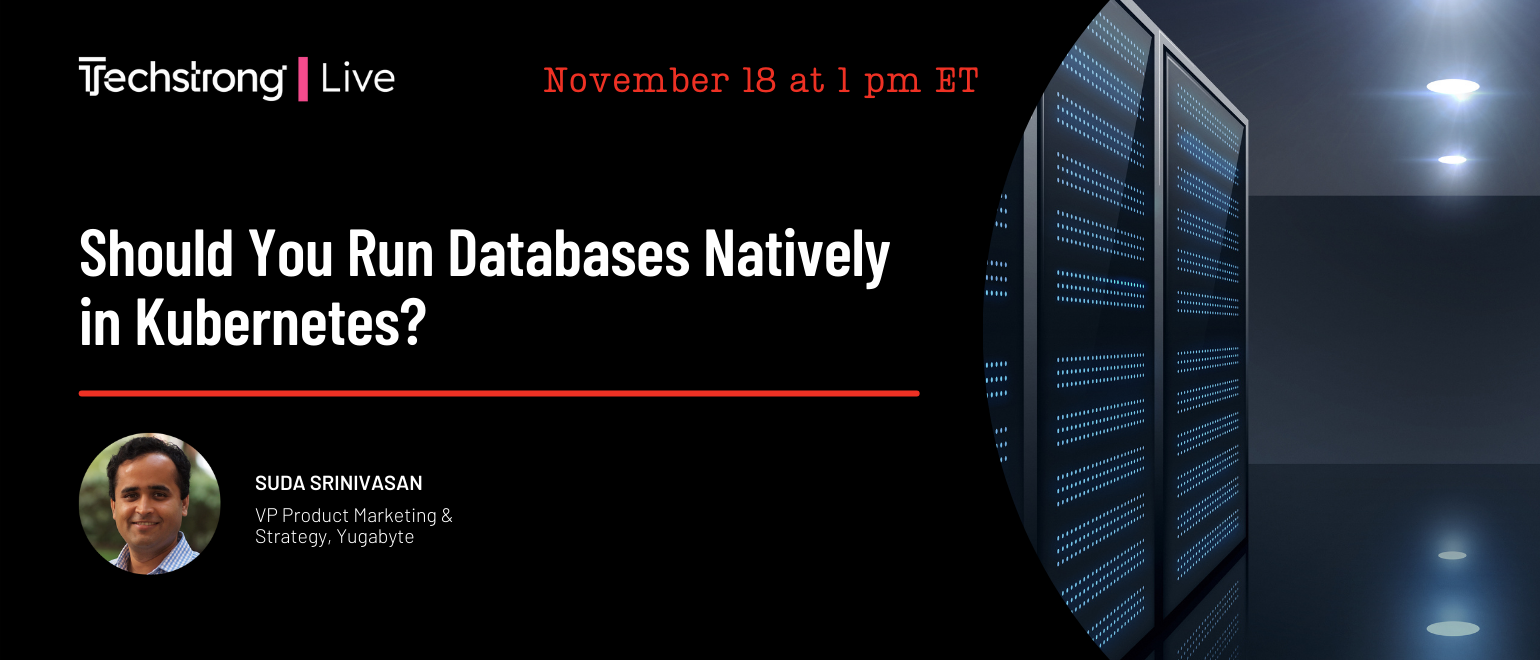Should You Run Databases Natively in Kubernetes?
Webinar
Think About Your Audience Before Choosing a Webinar Title

Sponsored by RED HAT MARKETPLACE and Yugabyte
OnDemand
Anytime
What You’ll Learn in This Webinar
Kubernetes has been a game-changer for stateless workloads, but does it have the same transformative impact on stateful services such as distributed databases? This session will cover the challenges and key considerations of running stateful workloads and databases in Kubernetes environments in production. We will discuss how modern databases such as YugabyteDB are optimized for the Kubernetes model and offer a peek into what's possible if stateful services can meet Kubernetes halfway.
Join Yugabyte and Red Hat to discuss:
- Challenges and key considerations for running stateful workloads in Kubernetes
- The deployment architecture of YugabyteDB in Red Hat OpenShift
- Best practices to achieve resilience, scale and geo-distribution for cloud-native apps with YugabyteDB and OpenShift
Suda Srinivasan
VP Product Marketing & Strategy - Yugabyte
Suda Srinivasan is the VP of product marketing and strategy at Yugabyte, the company behind the open source distributed SQL database for cloud native applications. Prior to joining Yugabyte, Suda was the VP of marketing at cloud security companies Obsidian Security and Dome9. At Dome9, Suda led go-to-market execution and technology partnerships with leading cloud providers, driving over 150% YoY growth till the company’s acquisition by Check Point. Suda has served in leadership positions in product marketing and consulting at Nutanix and Deloitte. He began his career in engineering at Microsoft and the IBM Almaden Research Center. Suda has a masters degree in computer science from the University of Illinois at Urbana-Champaign and an MBA from Stanford.







